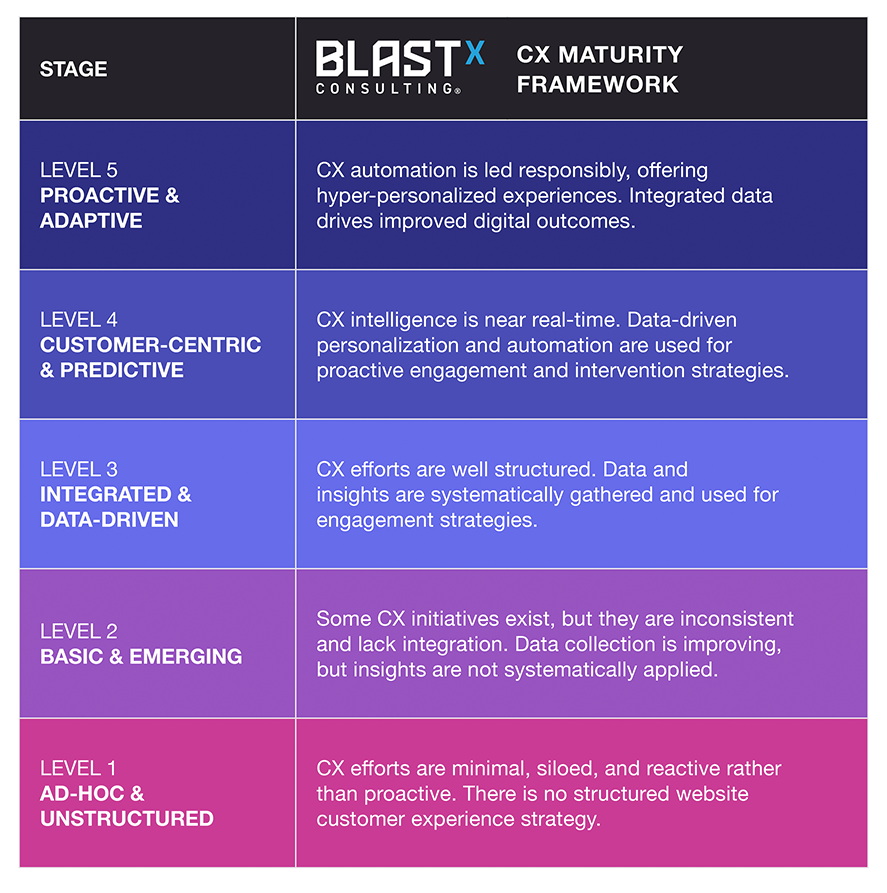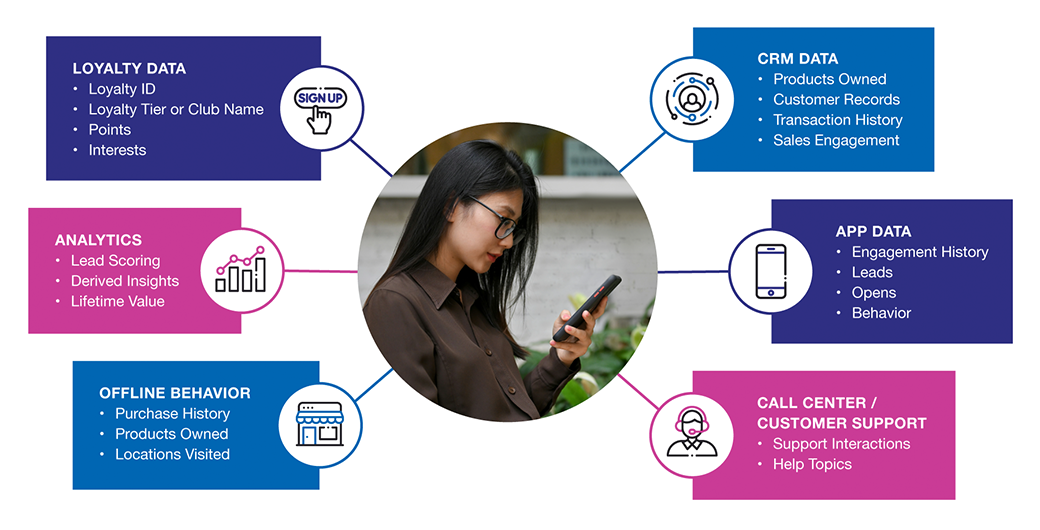Welcome to 2025, where the MarTech landscape is more complex than ever. With data pouring in from every touchpoint of the customer journey, brands face mounting pressure to turn information into actionable insights, deliver deeply personalized experiences, and stay compliant with evolving regulations. The challenge isn’t just about building scalable, secure systems. It’s about bridging the gap between marketing vision and technical execution to drive measurable return on investment.
Below, I explore the key MarTech trends in 2025 and how marketing leaders can reshape customer experience to position themselves for success.
Artificial Intelligence: A Promising Tool Still Proving Its Worth
AI continues to dominate conversations in marketing, often heralded as the ultimate solution to modern challenges. Real-time learning models offer marketers the ability to anticipate customer needs, deliver the right message at the right time, and streamline operations. However, while AI holds immense promise, scaling it effectively remains a challenge. Many organizations struggle with high costs, technical complexity, and the ongoing need for human oversight. Still, its potential to transform marketing and operations across the customer lifecycle is undeniable.
“AI is playing a role in strategy development, with 48% of organizations applying it in this area, rising to 52% among high performers.”
Key Takeaway: Approach AI with optimism but tempered expectations. Use it to enhance (not replace) existing strategies, and implement strong oversight to manage costs and mitigate risks.
Personalization: Beyond First Names—Elevating Customer Interactions
Consumers expect more than just their names in subject lines. They want hyper-relevant, real-time personalization and messaging that aligns with their unique journey across channels. Delivering this level of personalization requires rich, clean, and unified customer profiles, as well as seamless collaboration between marketing creatives and technology teams.
AI-driven personalization and dynamic content can help scale these efforts, but marketers should be cautious about over-relying on algorithms that may not fully grasp nuanced human behavior.

Key Trend Takeaway: Elevating personalized interactions requires a culture of cross-department collaboration, grounded in accurate real-time customer data and flexible, AI-assisted capabilities
Predictive Analytics in Marketing: From Insights to Action
For forward-thinking brands, predictive analytics has become a competitive advantage. By analyzing historical and real-time customer data, predictive models can anticipate customer behavior, enabling proactive decision-making. While these insights are powerful, leaders must recognize that analytics aren’t infallible. Models are only as strong as the data they rely on; biases or gaps can lead to misleading conclusions.
“The internal team at Adobe saw around an 80% return on media investment from Adobe Mix Modeler in the last five years alone. That’s huge.”
Key Trend Takeaway: Treat predictive analytics as a strategic asset within a continuous cycle of testing, learning, and optimization. Prioritize data quality and stay critical of your outputs.
Managing Complex MarTech Ecosystems

In 2025, the average MarTech stack includes dozens of interconnected solutions, from CRM and marketing automation to data management, identity resolution, and content management. Seamless integration is critical, yet it often feels like juggling in a hurricane:one misstep can derail marketing efforts or compromise data integrity.
Key Trend Takeaway: Move beyond reacting to siloed tools. Focus on orchestrating a connected, flexible MarTech ecosystem that meets today’s needs and scales for future growth.
Building Unified Customer Profiles: A Single Source of Truth
Accurate, centralized, and accessible customer data is the foundation of any successful MarTech strategy. Unified customer profiles consolidate all relevant data, including purchase history, engagement touchpoints, demographic details, and more, into a comprehensive, real-time customer data view. AI tools can help create these profiles, but their effectiveness depends on data quality and governance. Automated systems also struggle with reconciling discrepancies or handling edge cases without human oversight.

Key Trend Takeaway: Invest in unified customer profiles to streamline cross-channel initiatives, reduce operational inefficiencies, and amplify marketing personalization impact while exploring how AI can help address limitations.
Integrating Diverse MarTech Platforms: The Puzzle Pieces Must Fit
When evaluating new solutions, marketing leaders often underestimate the challenges of integration. From legacy CRM systems to next-gen marketing tools, aligning diverse platforms requires strategic foresight. Without it, integration efforts can lead to delays, unforeseen costs, and operational bottlenecks. Seamless connectivity demands a focus on compatibility, scalability, and long-term sustainability.
Key Trend Takeaway: Design your MarTech ecosystem with interoperability at its core, anticipating both current needs and future technology shifts.
Trade-Offs: All-in-One Platforms vs. Best-of-Breed Solutions
Choosing between an all-in-one platform and a best-of-breed approach requires a careful evaluation of business needs and long-term goals.
- All-in-one platforms simplify operations with built-in integrations, ease of use, and centralized support. They reduce vendor complexity and can offer cost savings. However, they may lack the depth and specialization of niche solutions, and businesses risk vendor lock-in as their needs evolve.
- Best-of-breed solutions provide advanced capabilities and greater flexibility, allowing organizations to tailor their tech stack to specific needs. However, managing multiple tools increases integration complexity, costs, and the risk of data silos if systems don’t work seamlessly together.
Key Trend Takeaway: The best approach often combines a strong core platform with select specialized tools. By evaluating operational priorities, resource capacity, and scalability, organizations can build a MarTech ecosystem that delivers both immediate impact and long-term agility
Balancing Innovation and Regulatory Compliance
Forward-thinking organizations recognize that compliance isn’t a barrier to innovation—it’s the framework that enables ethical and sustainable experimentation. As regulations like GDPR and CCPA evolve and new data protection laws emerge, every MarTech initiative must be built on a foundation of privacy and security. AI can help identify risks and automate compliance processes, but it’s not a catch-all solution. Human oversight remains essential to interpret nuanced regulatory requirements and ensure responsible implementation.
“87% of customers said they would not do business with a company if they had concerns about its security practices. 71% said they would stop doing business with a company if it gave away sensitive data without permission.”
Key Trend Takeaway: Involve legal and compliance teams early, and embed privacy-by-design principles to future-proof your marketing operations.
In Closing: Optimism and Curiosity Drive Customer Connections

The MarTech landscape in 2025 presents exciting opportunities to transform marketing and customer engagement. While the full potential of emerging technologies is still unfolding, thoughtful experimentation and curiosity can uncover new ways to connect with audiences.
By adopting the right tools, building strong data frameworks, and prioritizing ethical standards, organizations can create experiences that both delight customers and build trust. The future trend of MarTech isn’t just about technology; it’s about collaboration, adaptability, and exploration with optimism and curiosity.
Future-Proofing Your MarTech Strategy in 2025
Navigating the MarTech landscape in 2025 requires understanding and adapting to the trends toward a strategic balance of innovation, integration, and compliance. Organizations that embrace AI responsibly, unify their customer data, and build flexible, scalable ecosystems will be best positioned to drive meaningful engagement and long-term growth. The right MarTech strategy is about more than technology. It’s about aligning people, processes, and platforms to create seamless customer experiences.
If you’re ready to optimize your MarTech ecosystem and stay ahead of industry trends, contact BlastX today. Looking to learn more? Explore our MarTech Consulting services to see how we can help you turn strategy into impact.


